FRANCE
Plants and Animals

Plants and Animals

Cities in FRANCE
| Aix-en-provence | Amiens | Avignon |
| Bordeaux | Dijon | Grenoble |
| Le havre | Lille | Lyon |
| Nice | Paris |
Popular destinations FRANCE
| Alsace | Ardeche | Auvergne |
| Brittany | Burgundy | Cevennes |
| Corsica | Cote d'azur | Dordogne |
| Jura | Languedoc-roussillon | Loire valley |
| Lot | Normandy | Picardy |
| Provence |
Plants and Animals
Plants
France has a rich and varied flora with more than 4000 different types of higher plants. The four main areas are: a very gradually merging Atlantic and Central European vegetation and an alpine and Mediterranean vegetation.
The tree line lies in the various mountain ranges at different heights; in the Pyrenees at 2500 meters, in the French Alps at 1900 meters, in the Auvergne at 1500 meters and in the Vosges at 1100 meters. In the past, France was almost entirely covered with forest, currently only a quarter. Large forests can still be found in the Basin of Paris (Fontainebleau, Compiègne), in Normandy, and near Orléans.
advertentie
France: Villas & holiday homes
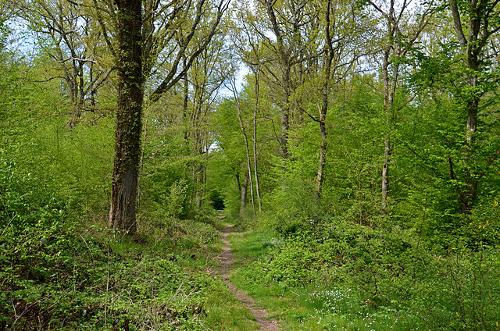 Forest of Fontainebleau in the springPhoto: Clément Bardot CC 3.0 Unported no changes made
Forest of Fontainebleau in the springPhoto: Clément Bardot CC 3.0 Unported no changes made
In the plains and hills of the Atlantic and Central European area, the forest consists of deciduous forest: oak birch forest on poorer soils, oak hedge-beech forest on nutrient-rich soils, beech forest in the ascending old state forests, alder, elm and ash forests in the river valleys.
Where forests are lacking, in the Atlantic area, the heather is particularly noticeable, with mainly gorse species and red heather.
The dunes with their characteristic vegetation are especially well developed in the north, on Cotentin, in Charente-Maritime and in Les Landes, where they are covered with maritime pines. Famous are the orchid-rich limestone grasslands that can be found all over France. In the mountains you will find, from low to high, belts of beech forest, beech-spruce forest, Norway spruce forest and the alpine zone. Remote alpine meadows are home to countless wildflowers, including crocuses, blue and yellow gentians, numerous varieties of lilies and orchids, alpine anemones, bellflowers and tulips. The nationale tree of France is the yew.
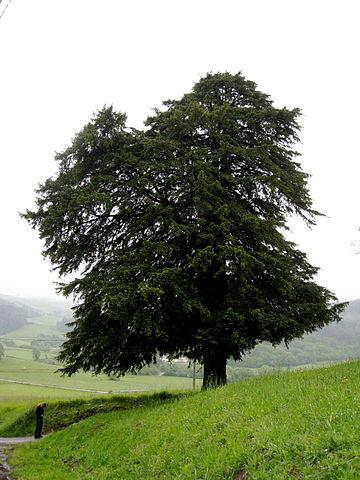 Yew, national tree of FrancePhoto: Sitomon CC 2.0 Generic no changes made
Yew, national tree of FrancePhoto: Sitomon CC 2.0 Generic no changes made
More than 400 types of flowers are found in the Pyrenees, 160 of which are only here, including the Pyrenean ramonda and saxifrage, special types of acelia and lilies, small purple crocuses and pink androsace.
In summer, the mountain pastures of the Pyrenees are full of flowers such as Turkish lilies, columbines, lapwing flowers, gentian, violets, geraniums, daffodils and orchids.
The Mediterranean flora and vegetation in the extreme south has its own character. The original holm oak forest has almost disappeared and been replaced by maquis, an evergreen thorn bush, which thrives on stony soil and garrigue, a heather-like vegetation with dwarf oak, lavender and rosemary, which grows mainly on calcareous soil with olive groves, vineyards and cultures of fig and almond, on the Côte d'Azur of oranges and lemons.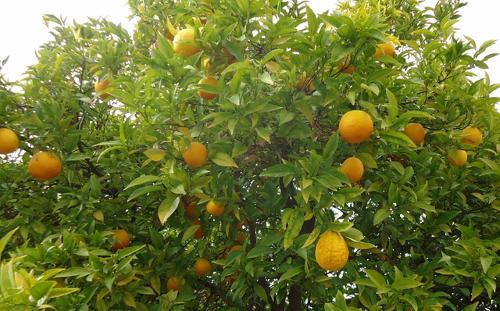 Orange tree, FrancePhoto: Tomwsulcer in the public domain
Orange tree, FrancePhoto: Tomwsulcer in the public domain
Animals
The animal world of France is in line with that of Western, Central and Southern Europe. Typical mountain fauna can be found in the Western Alps and the Pyrenees. Due to the strong temperature differences in the sea of the Atlantic Ocean and the Mediterranean Sea, the coasts have completely different fauna. Due to the vast expanse of the area, one finds a number of different elements under the animal world.
The genet reaches its northern border in France; the flamingo breeding grounds in the Camargue (Rhône Delta) are the most northerly in Europe and the Mediterranean. The night heron and the egret also breed in this delta and the beaver can also be found here. Unbridled hunting of all kinds of game and birds has contributed to the impoverishment of the fauna; national parks and reserves are still too few in number to ensure the survival of countless rare species.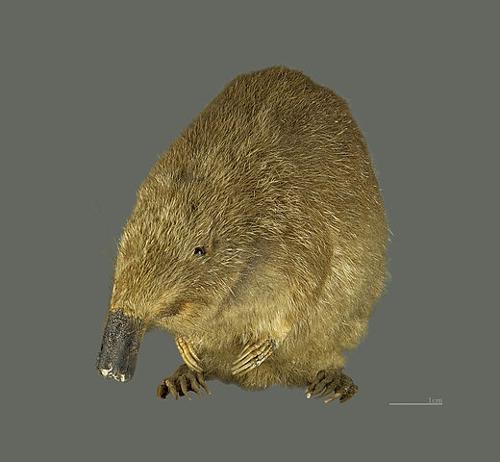 Pyrenean desman, FrancePhoto: Muséum de Toulouse CC 4.0 International no changes made
Pyrenean desman, FrancePhoto: Muséum de Toulouse CC 4.0 International no changes made
Brown bears are still found in the Pyrenees, which do not live in the high mountains but on the edge of the highest point where people also live. Other mountain inhabitants are marmots, "isards" or Pyrenean antelope (chamois), snow partridge and the Pyrenean Desman or water mole, a nocturnal animal with webbed feet and a pointed snout only found in the Pyrenees and the Caucasus.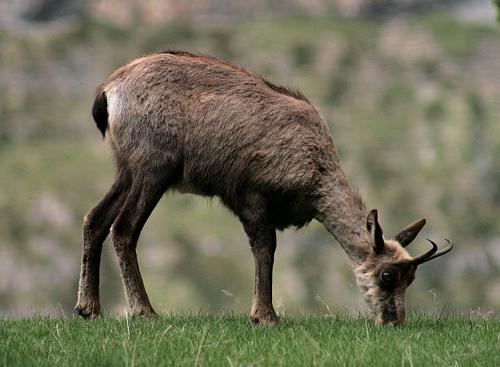 Pyrenean chamois, FrancePhoto: Tamás Cserkész CC 2.0 Generic no changes made
Pyrenean chamois, FrancePhoto: Tamás Cserkész CC 2.0 Generic no changes made
The king of the Pyrenees is the bearded vulture, the largest European vulture with a wingspan of up to three meters. Other vultures that still occur here are the griffon vulture and the Egyptian vulture. In the Alps and the Pyrenees, chamois and ibex live at high altitudes and in the Alps characteristic species such as snowshoe hare, alpine marmot, alpine chough, alpine chough and ptarmigan.
Many species of bats live in the north and west, especially horseshoe bats and smooth noses. Furthermore, insect eaters such as mole, hedgehog and shrew and rodents such as hare, rabbit, hamster, squirrel, sleep-turbulent and real mice. Small predators include weasel, marten, polecat, badger and otter and ungulates red deer, roe deer and wild boar.
The bird population does not really have any special species. There are reserves for all kinds of seabirds off the coast of Brittany and here live auks, guillemots, puffins, cormorants, curlews and gannets. The coastal marshes in the west and south of France are stopping places for migratory waterfowl. The rock pigeon is an ancestor of the well-known city pigeon living on the rocks. The national bird of France is de )Gallic) rooster.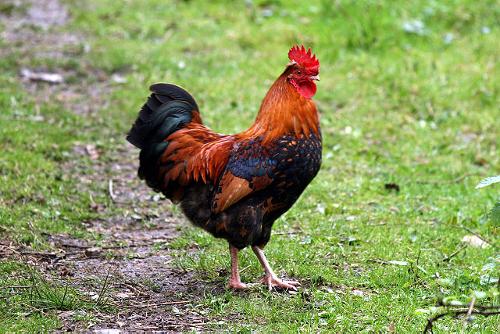 National symbol of France is the (Gallic) roosterPhoto: Remi Jouan CC 3.0 Unported no changes made
National symbol of France is the (Gallic) roosterPhoto: Remi Jouan CC 3.0 Unported no changes made
In the South of France the number of animal species is much larger, partly because of the Mediterranean and South European species. Examples are the bee-eater, the roller and the greater number of reptiles and amphibians.Common seals live along the Atlantic coast and monk seal, harbor porpoise, bottlenose dolphin and dolphin live along the Mediterranean coast. The mouflon occurs on the island of Corsica.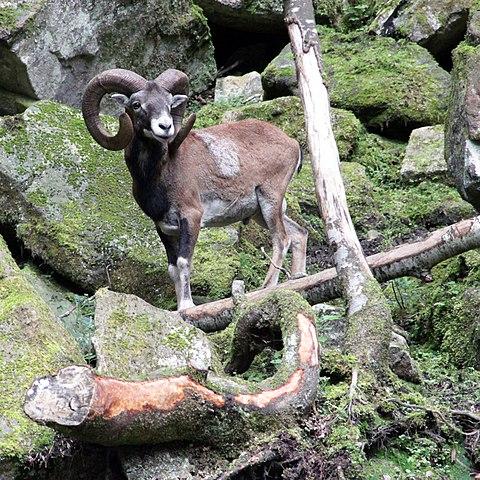 European moeflon on Corsica, FrancePhoto: Vassil in the public domain
European moeflon on Corsica, FrancePhoto: Vassil in the public domain
Sources
Bailey, R. / Frankrijk
Kosmos-Z&K
France
Lonely Planet
Frankrijk
Van Reemst
CIA - World Factbook
BBC - Country Profiles
Last updated June 2025Copyright: Team The World of Info